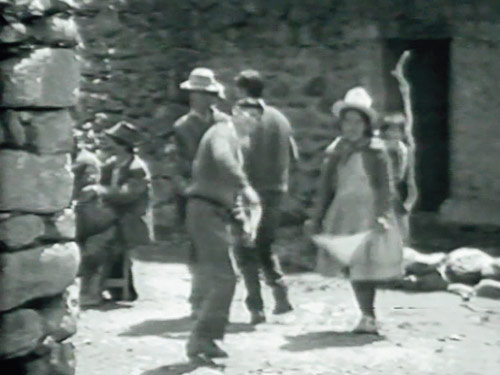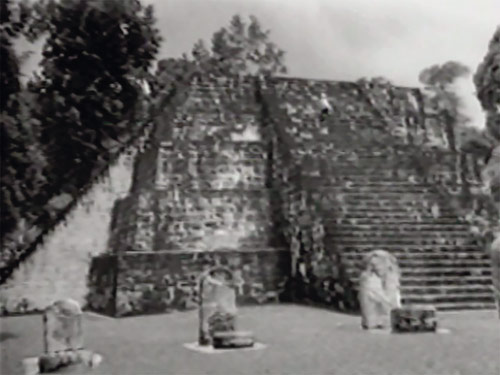1973-1979
Juan Downey
The idea for Video Trans Americas struck Downey as a kind of epiphany in New York. As a result, he went in search of his roots, after having lived and worked for almost ten years in Spain, France and the USA. Downey’s initial intention was to make a video-expedition from Toronto to Tierra del Fuego, recording with his video camera the different cultures that share the space of the American continent, very often without any relationship with each other and at other times in open conflict. The working programme included the recording of different urban and jungle communities and afterwards projecting the footage made in the very same communities as well as other contexts across the continent. Finally, a single work was edited exploring the interactions of time, space and context.

At the end of the 1960s, Juan Downey started to take an interest in technology as a decisive factor for renewal that would prompt radical social and economic changes, as well as a utopian and liberating tool that could also broker a reconciliation between nature and progress. Using a broad sampling of media, he focussed his practice on ways of translating the invisible elements of energy transmission into visible forms.
In 1973, after experimenting with energies in sculptures and happenings, and coextensively with his research into invisible architecture understood as an information system, Downey pinpointed video as the ideal tool for putting his ideas into practice. Its potential for feedback and reflectivity – video as a medium in which the artist is both reflected and projected in society – was perfect not only for expressing the ideas on space and time he was concerned with, but also to give shape to Video Trans Americas, the most ambitious project he had undertaken until that moment. Downey continued in his work with the Yanomami community in Venezuela, which gave rise to pieces like El shabono abandonado [The Abandoned Shabono] (1978), (pp. 150-151), and El caimán con la risa de fuego [The Laughing Alligator] (1979). – NEM





